Report on Wellness and Wellbeing of Early Childhood Educators
VerifiedAdded on 2022/10/31
|12
|1118
|77
Report
AI Summary
This report delves into the critical issue of wellness and wellbeing among educators in early childhood education settings. It begins by defining holistic wellness and its various dimensions, emphasizing the importance of addressing the psychological, mental, social, emotional, spiritual, and environmental aspects of educators' lives. The report explores theoretical models such as the Illness-Wellness Continuum and the Iceberg Model of Health and Illness to understand the factors influencing educator wellbeing. It then outlines practical strategies for improving staff wellness, including seeking community support, providing stress management training, recognizing educator efforts, and advocating for fair wages and benefits. The report highlights the role of leaders in early childhood settings as team leaders, pedagogy creators, policy designers, and rights advocates. Finally, it concludes by emphasizing the need for continuous improvement and the promotion of a healthy work environment through effective leadership and advocacy. References from various research papers and publications support the findings and recommendations presented.
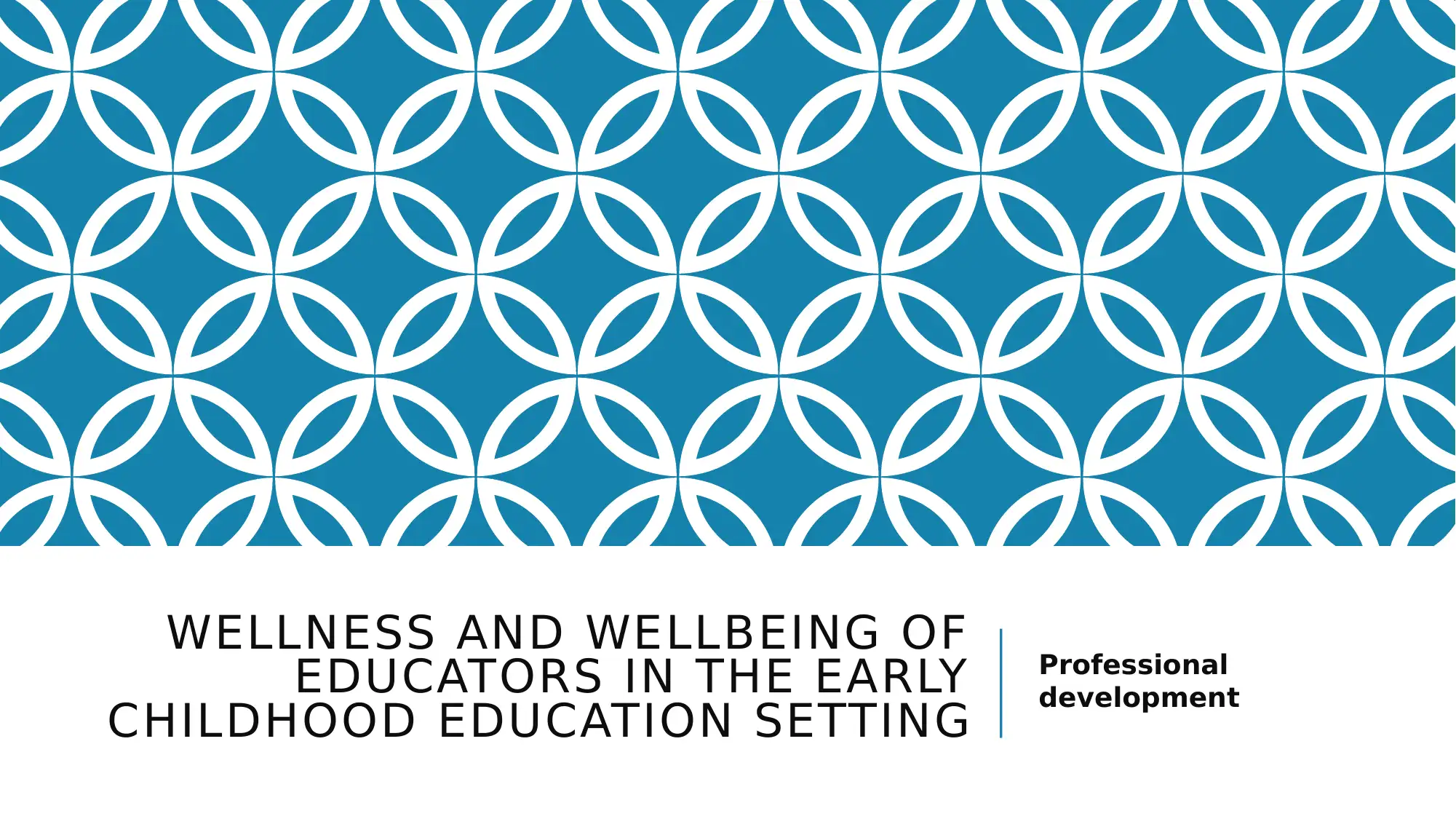
WELLNESS AND WELLBEING OF
EDUCATORS IN THE EARLY
CHILDHOOD EDUCATION SETTING
Professional
development
EDUCATORS IN THE EARLY
CHILDHOOD EDUCATION SETTING
Professional
development
Paraphrase This Document
Need a fresh take? Get an instant paraphrase of this document with our AI Paraphraser
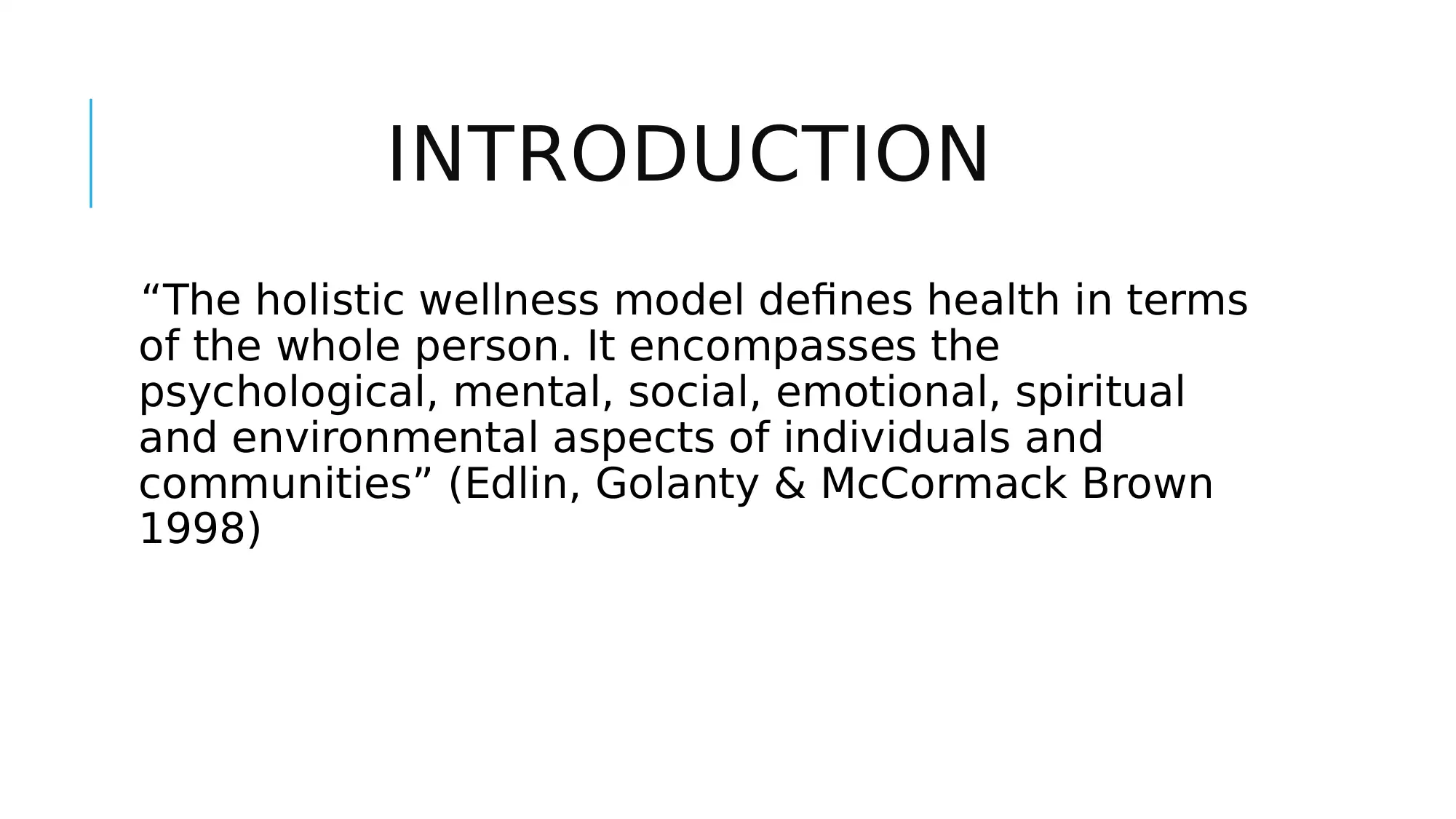
INTRODUCTION
“The holistic wellness model defines health in terms
of the whole person. It encompasses the
psychological, mental, social, emotional, spiritual
and environmental aspects of individuals and
communities” (Edlin, Golanty & McCormack Brown
1998)
“The holistic wellness model defines health in terms
of the whole person. It encompasses the
psychological, mental, social, emotional, spiritual
and environmental aspects of individuals and
communities” (Edlin, Golanty & McCormack Brown
1998)
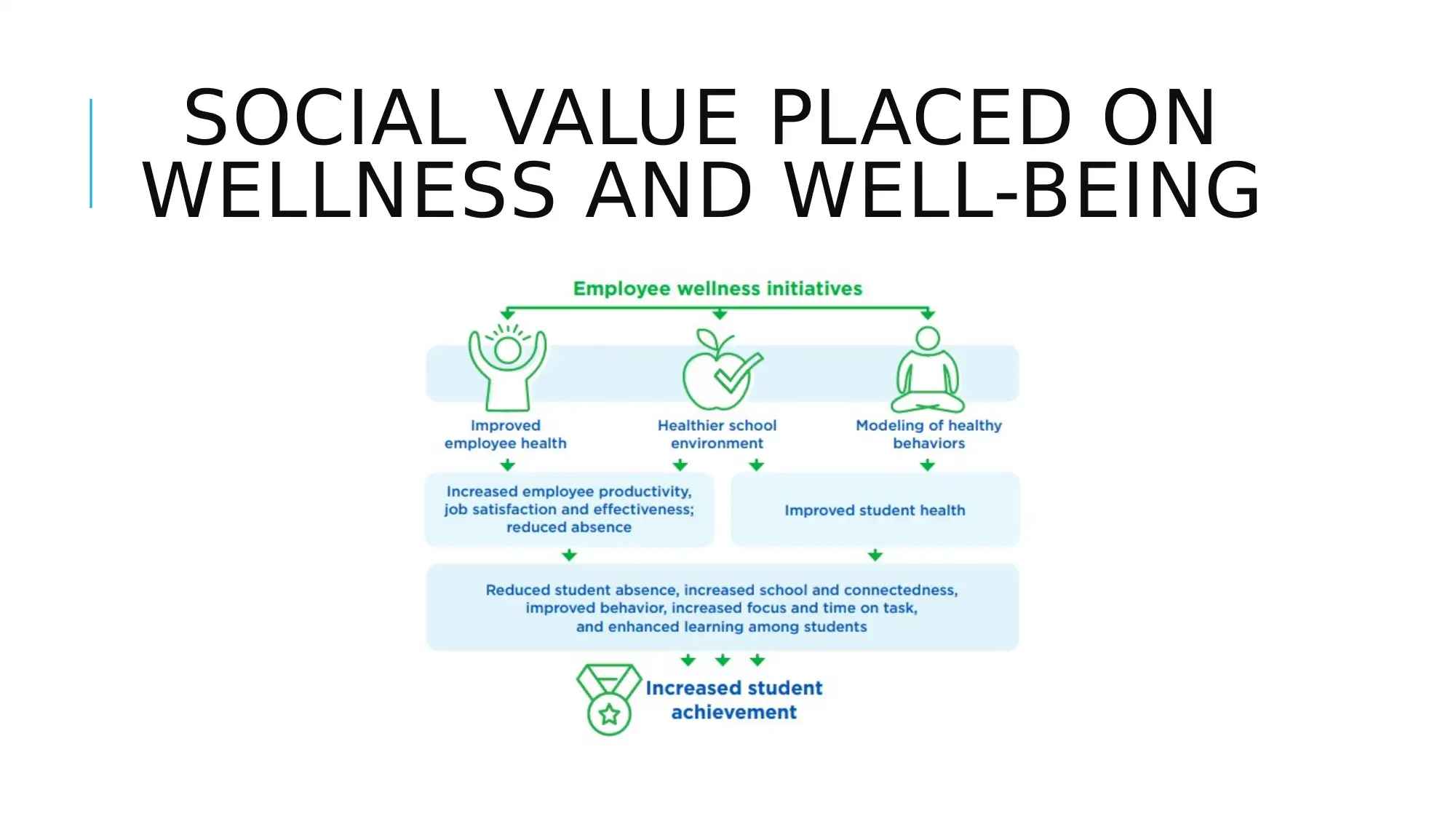
SOCIAL VALUE PLACED ON
WELLNESS AND WELL-BEING
WELLNESS AND WELL-BEING
⊘ This is a preview!⊘
Do you want full access?
Subscribe today to unlock all pages.

Trusted by 1+ million students worldwide
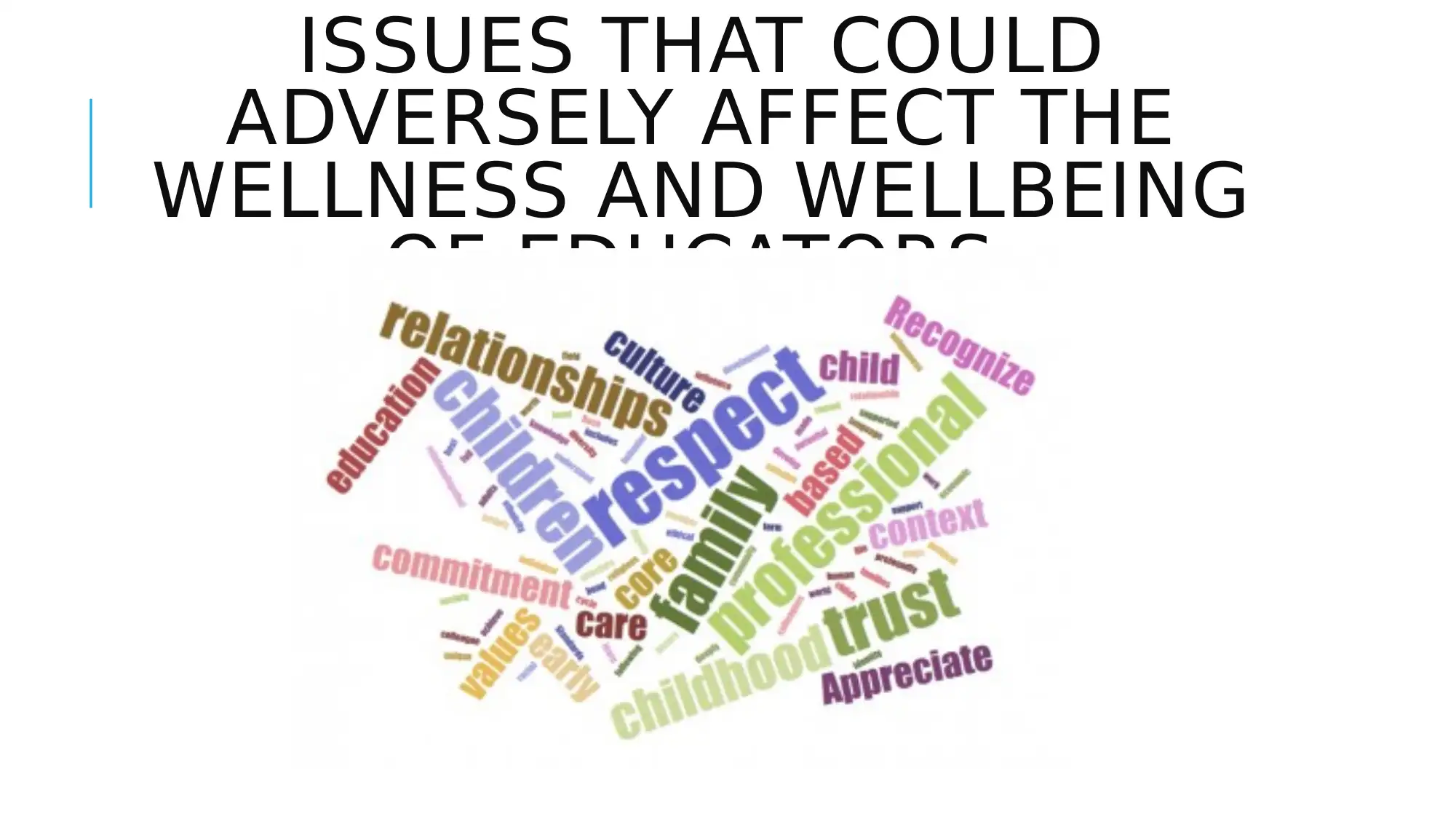
ISSUES THAT COULD
ADVERSELY AFFECT THE
WELLNESS AND WELLBEING
OF EDUCATORS
ADVERSELY AFFECT THE
WELLNESS AND WELLBEING
OF EDUCATORS
Paraphrase This Document
Need a fresh take? Get an instant paraphrase of this document with our AI Paraphraser
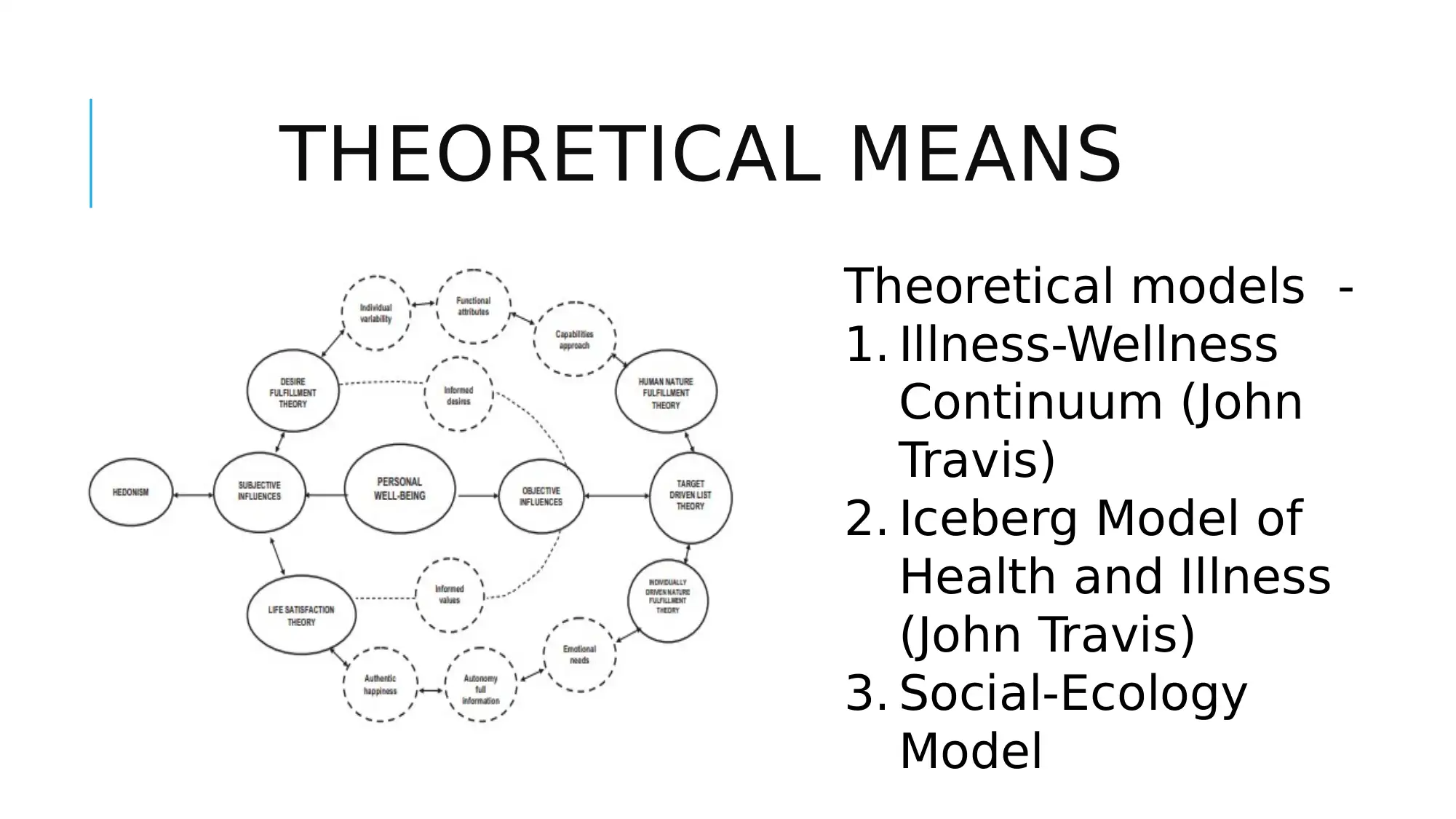
THEORETICAL MEANS
Theoretical models -
1. Illness-Wellness
Continuum (John
Travis)
2. Iceberg Model of
Health and Illness
(John Travis)
3. Social-Ecology
Model
Theoretical models -
1. Illness-Wellness
Continuum (John
Travis)
2. Iceberg Model of
Health and Illness
(John Travis)
3. Social-Ecology
Model
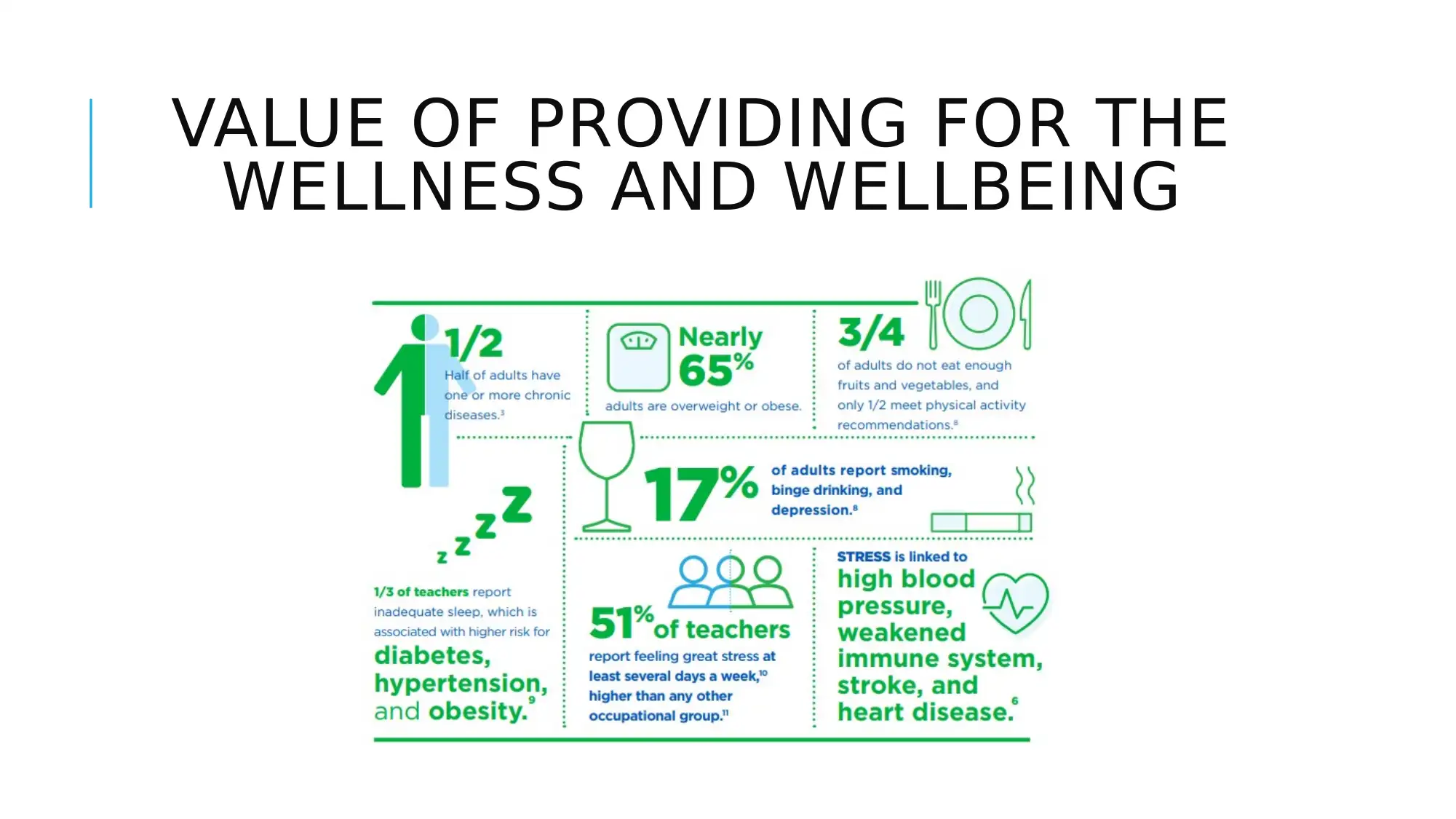
VALUE OF PROVIDING FOR THE
WELLNESS AND WELLBEING
WELLNESS AND WELLBEING
⊘ This is a preview!⊘
Do you want full access?
Subscribe today to unlock all pages.

Trusted by 1+ million students worldwide
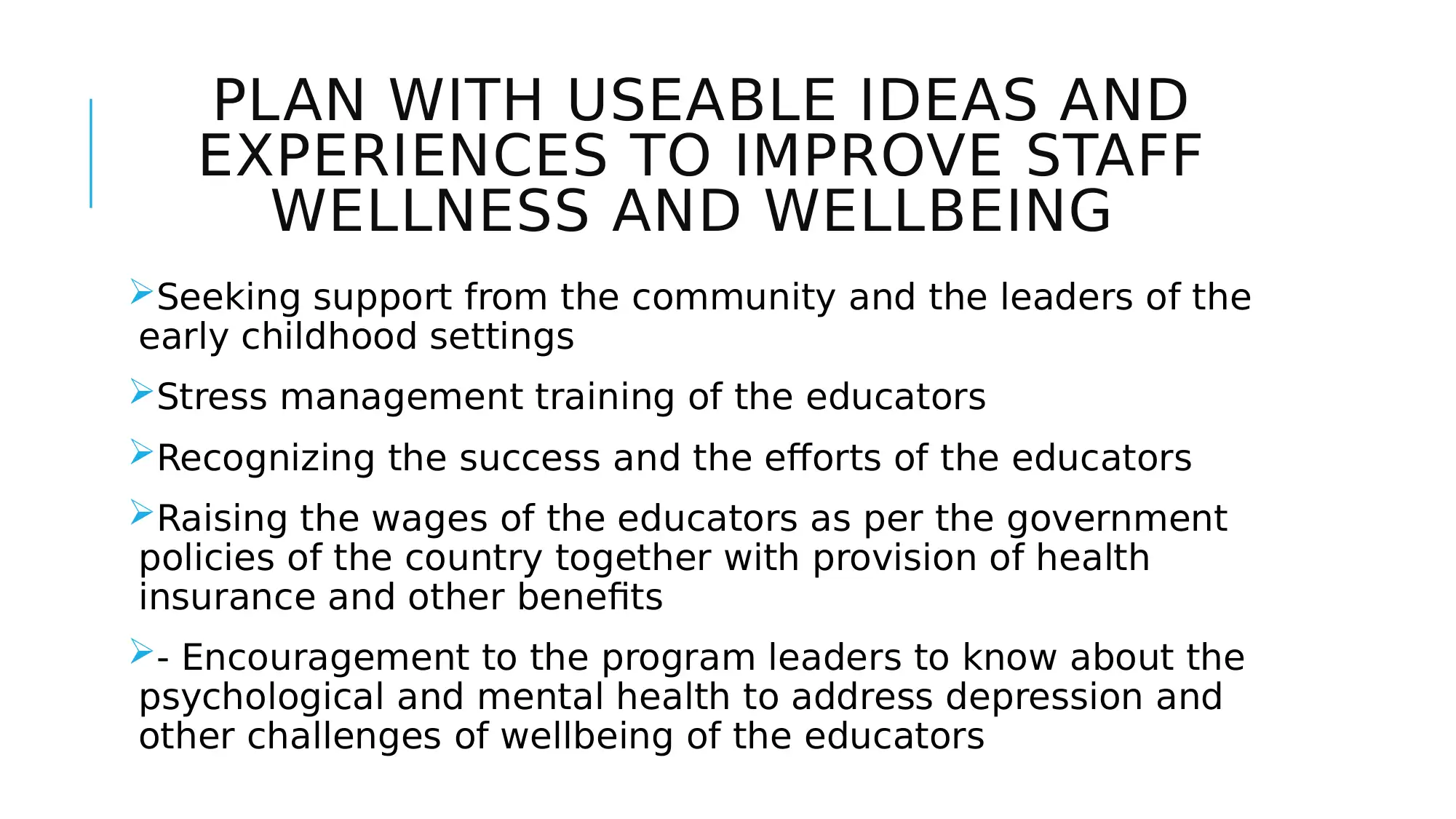
PLAN WITH USEABLE IDEAS AND
EXPERIENCES TO IMPROVE STAFF
WELLNESS AND WELLBEING
Seeking support from the community and the leaders of the
early childhood settings
Stress management training of the educators
Recognizing the success and the efforts of the educators
Raising the wages of the educators as per the government
policies of the country together with provision of health
insurance and other benefits
- Encouragement to the program leaders to know about the
psychological and mental health to address depression and
other challenges of wellbeing of the educators
EXPERIENCES TO IMPROVE STAFF
WELLNESS AND WELLBEING
Seeking support from the community and the leaders of the
early childhood settings
Stress management training of the educators
Recognizing the success and the efforts of the educators
Raising the wages of the educators as per the government
policies of the country together with provision of health
insurance and other benefits
- Encouragement to the program leaders to know about the
psychological and mental health to address depression and
other challenges of wellbeing of the educators
Paraphrase This Document
Need a fresh take? Get an instant paraphrase of this document with our AI Paraphraser
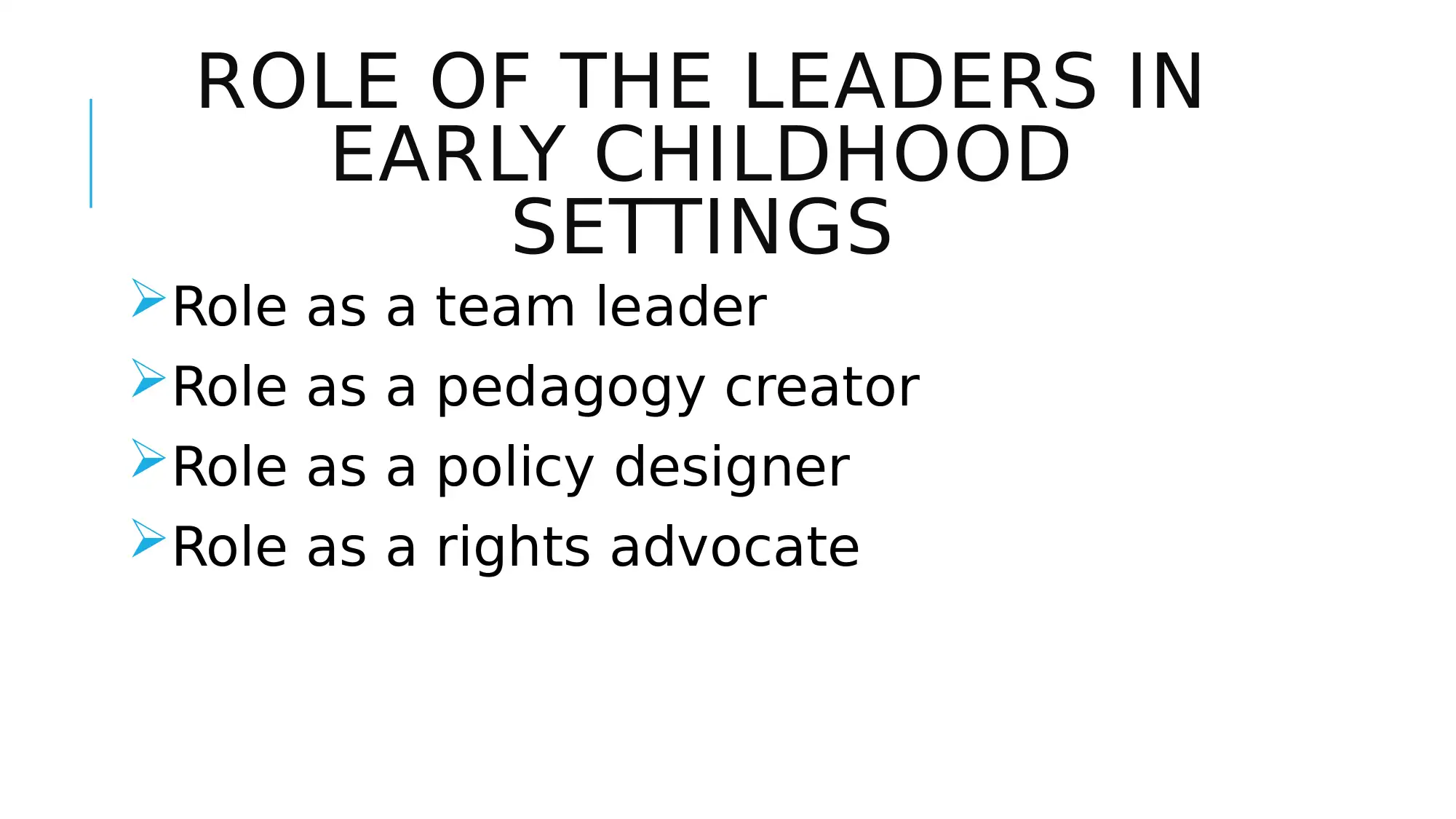
ROLE OF THE LEADERS IN
EARLY CHILDHOOD
SETTINGS
Role as a team leader
Role as a pedagogy creator
Role as a policy designer
Role as a rights advocate
EARLY CHILDHOOD
SETTINGS
Role as a team leader
Role as a pedagogy creator
Role as a policy designer
Role as a rights advocate
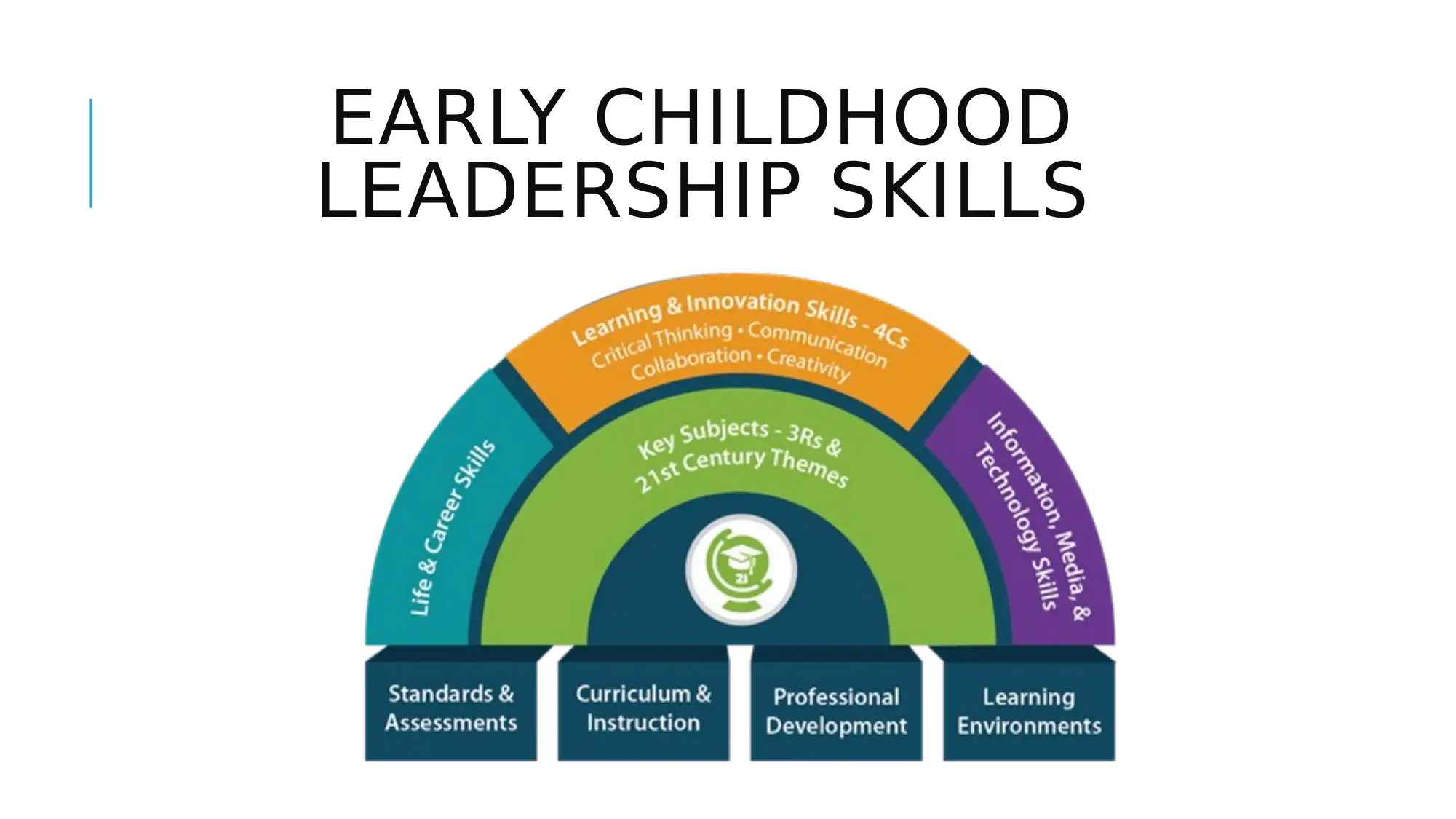
EARLY CHILDHOOD
LEADERSHIP SKILLS
LEADERSHIP SKILLS
⊘ This is a preview!⊘
Do you want full access?
Subscribe today to unlock all pages.

Trusted by 1+ million students worldwide
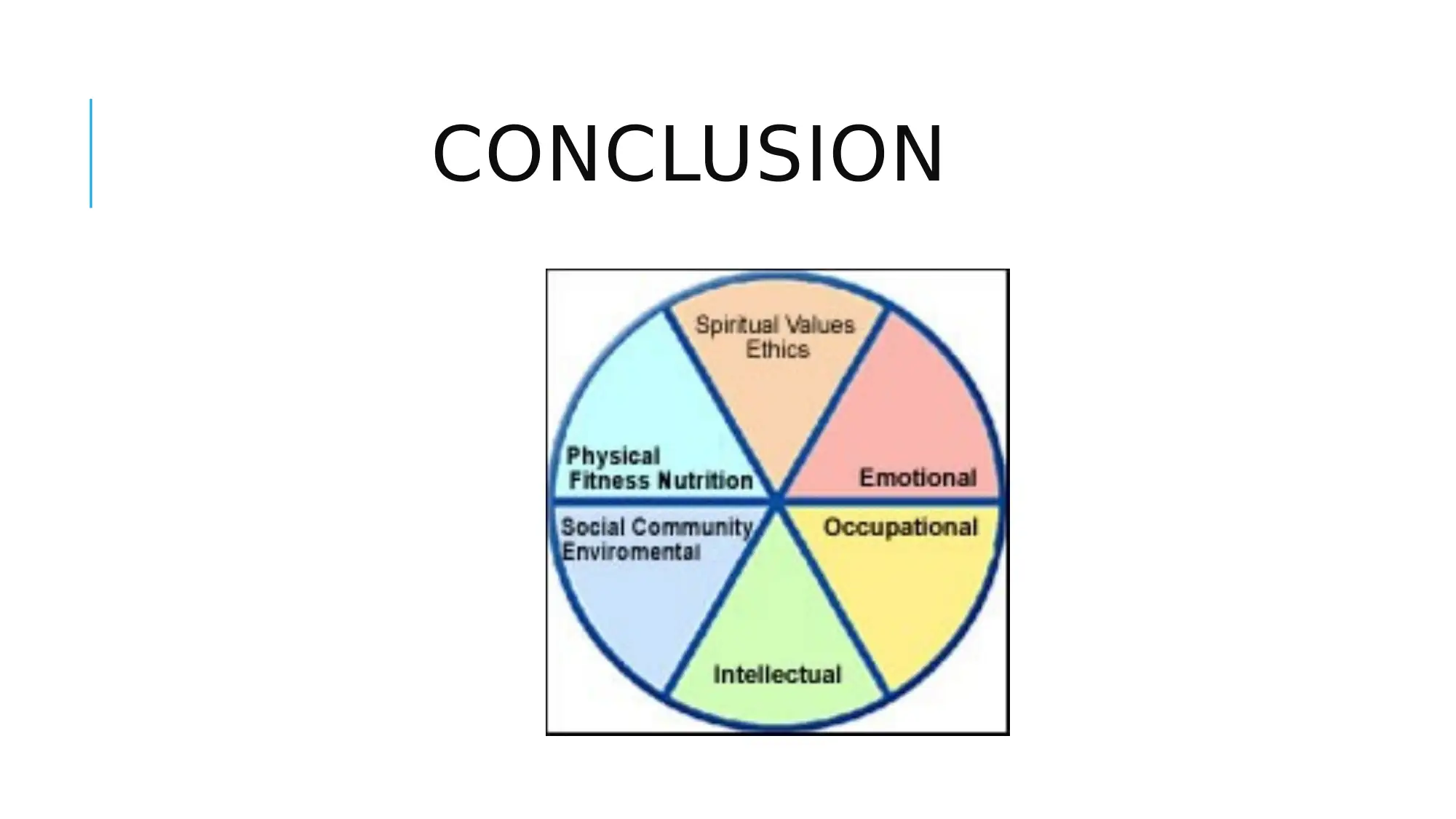
CONCLUSION
Paraphrase This Document
Need a fresh take? Get an instant paraphrase of this document with our AI Paraphraser
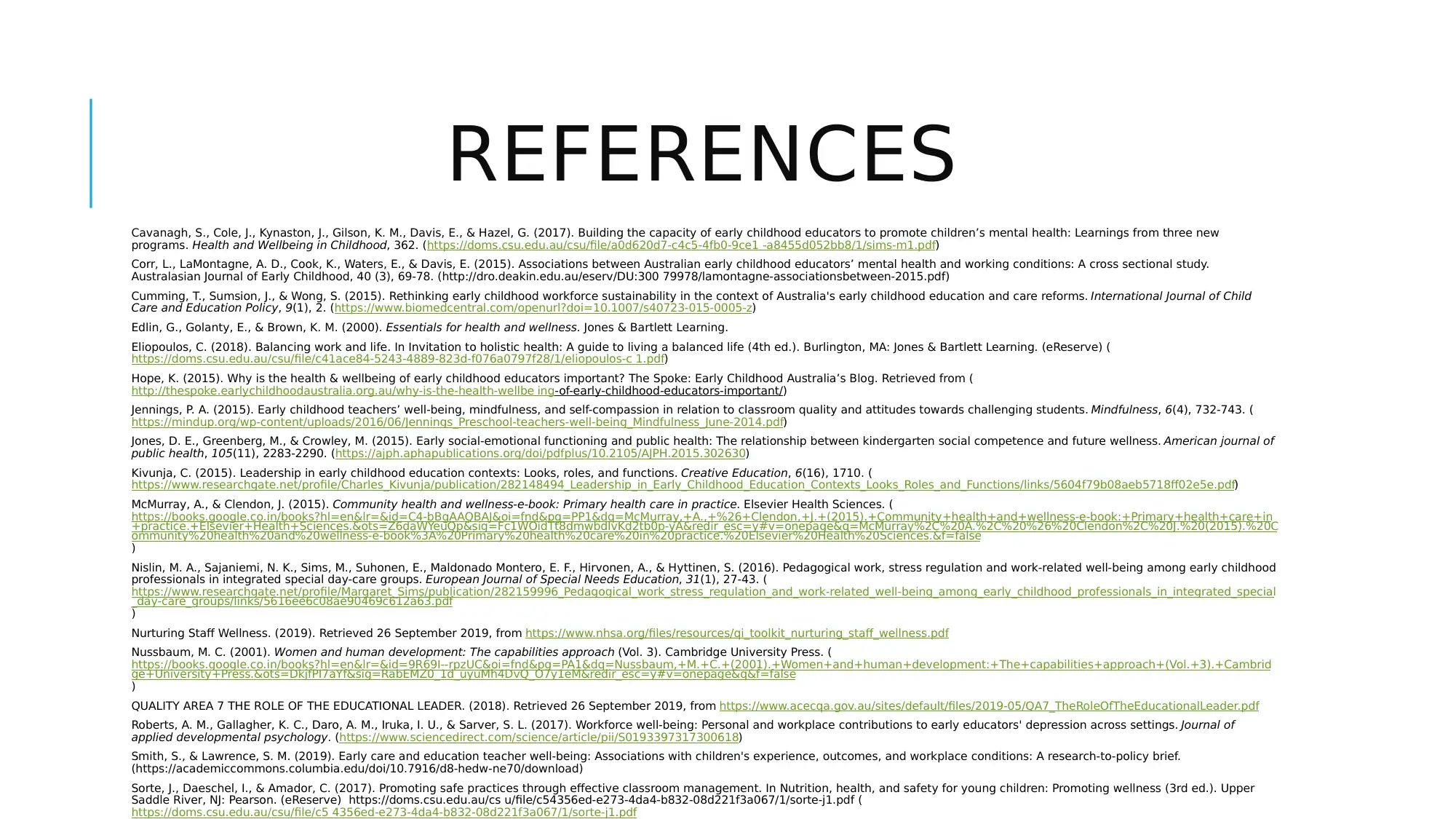
REFERENCES
Cavanagh, S., Cole, J., Kynaston, J., Gilson, K. M., Davis, E., & Hazel, G. (2017). Building the capacity of early childhood educators to promote children’s mental health: Learnings from three new
programs. Health and Wellbeing in Childhood, 362. (https://doms.csu.edu.au/csu/file/a0d620d7-c4c5-4fb0-9ce1 -a8455d052bb8/1/sims-m1.pdf)
Corr, L., LaMontagne, A. D., Cook, K., Waters, E., & Davis, E. (2015). Associations between Australian early childhood educators’ mental health and working conditions: A cross sectional study.
Australasian Journal of Early Childhood, 40 (3), 69-78. (http://dro.deakin.edu.au/eserv/DU:300 79978/lamontagne-associationsbetween-2015.pdf)
Cumming, T., Sumsion, J., & Wong, S. (2015). Rethinking early childhood workforce sustainability in the context of Australia's early childhood education and care reforms. International Journal of Child
Care and Education Policy, 9(1), 2. (https://www.biomedcentral.com/openurl?doi=10.1007/s40723-015-0005-z)
Edlin, G., Golanty, E., & Brown, K. M. (2000). Essentials for health and wellness. Jones & Bartlett Learning.
Eliopoulos, C. (2018). Balancing work and life. In Invitation to holistic health: A guide to living a balanced life (4th ed.). Burlington, MA: Jones & Bartlett Learning. (eReserve) (
https://doms.csu.edu.au/csu/file/c41ace84-5243-4889-823d-f076a0797f28/1/eliopoulos-c 1.pdf)
Hope, K. (2015). Why is the health & wellbeing of early childhood educators important? The Spoke: Early Childhood Australia’s Blog. Retrieved from (
http://thespoke.earlychildhoodaustralia.org.au/why-is-the-health-wellbe ing-of-early-childhood-educators-important/)
Jennings, P. A. (2015). Early childhood teachers’ well-being, mindfulness, and self-compassion in relation to classroom quality and attitudes towards challenging students. Mindfulness, 6(4), 732-743. (
https://mindup.org/wp-content/uploads/2016/06/Jennings_Preschool-teachers-well-being_Mindfulness_June-2014.pdf)
Jones, D. E., Greenberg, M., & Crowley, M. (2015). Early social-emotional functioning and public health: The relationship between kindergarten social competence and future wellness. American journal of
public health, 105(11), 2283-2290. (https://ajph.aphapublications.org/doi/pdfplus/10.2105/AJPH.2015.302630)
Kivunja, C. (2015). Leadership in early childhood education contexts: Looks, roles, and functions. Creative Education, 6(16), 1710. (
https://www.researchgate.net/profile/Charles_Kivunja/publication/282148494_Leadership_in_Early_Childhood_Education_Contexts_Looks_Roles_and_Functions/links/5604f79b08aeb5718ff02e5e.pdf)
McMurray, A., & Clendon, J. (2015). Community health and wellness-e-book: Primary health care in practice. Elsevier Health Sciences. (
https://books.google.co.in/books?hl=en&lr=&id=C4-bBgAAQBAJ&oi=fnd&pg=PP1&dq=McMurray,+A.,+%26+Clendon,+J.+(2015).+Community+health+and+wellness-e-book:+Primary+health+care+in
+practice.+Elsevier+Health+Sciences.&ots=Z6daWYeuQp&sig=Fc1WOidTt8dmwbdIvKd2tb0p-yA&redir_esc=y#v=onepage&q=McMurray%2C%20A.%2C%20%26%20Clendon%2C%20J.%20(2015).%20C
ommunity%20health%20and%20wellness-e-book%3A%20Primary%20health%20care%20in%20practice.%20Elsevier%20Health%20Sciences.&f=false
)
Nislin, M. A., Sajaniemi, N. K., Sims, M., Suhonen, E., Maldonado Montero, E. F., Hirvonen, A., & Hyttinen, S. (2016). Pedagogical work, stress regulation and work-related well-being among early childhood
professionals in integrated special day-care groups. European Journal of Special Needs Education, 31(1), 27-43. (
https://www.researchgate.net/profile/Margaret_Sims/publication/282159996_Pedagogical_work_stress_regulation_and_work-related_well-being_among_early_childhood_professionals_in_integrated_special
_day-care_groups/links/5616ee6c08ae90469c612a63.pdf
)
Nurturing Staff Wellness. (2019). Retrieved 26 September 2019, from https://www.nhsa.org/files/resources/qi_toolkit_nurturing_staff_wellness.pdf
Nussbaum, M. C. (2001). Women and human development: The capabilities approach (Vol. 3). Cambridge University Press. (
https://books.google.co.in/books?hl=en&lr=&id=9R69I--rpzUC&oi=fnd&pg=PA1&dq=Nussbaum,+M.+C.+(2001).+Women+and+human+development:+The+capabilities+approach+(Vol.+3).+Cambrid
ge+University+Press.&ots=DkjfPI7aYf&sig=RabEMZ0_1d_uyuMh4DvQ_O7y1eM&redir_esc=y#v=onepage&q&f=false
)
QUALITY AREA 7 THE ROLE OF THE EDUCATIONAL LEADER. (2018). Retrieved 26 September 2019, from https://www.acecqa.gov.au/sites/default/files/2019-05/QA7_TheRoleOfTheEducationalLeader.pdf
Roberts, A. M., Gallagher, K. C., Daro, A. M., Iruka, I. U., & Sarver, S. L. (2017). Workforce well-being: Personal and workplace contributions to early educators' depression across settings. Journal of
applied developmental psychology. (https://www.sciencedirect.com/science/article/pii/S0193397317300618)
Smith, S., & Lawrence, S. M. (2019). Early care and education teacher well-being: Associations with children's experience, outcomes, and workplace conditions: A research-to-policy brief.
(https://academiccommons.columbia.edu/doi/10.7916/d8-hedw-ne70/download)
Sorte, J., Daeschel, I., & Amador, C. (2017). Promoting safe practices through effective classroom management. In Nutrition, health, and safety for young children: Promoting wellness (3rd ed.). Upper
Saddle River, NJ: Pearson. (eReserve) https://doms.csu.edu.au/cs u/file/c54356ed-e273-4da4-b832-08d221f3a067/1/sorte-j1.pdf (
https://doms.csu.edu.au/csu/file/c5 4356ed-e273-4da4-b832-08d221f3a067/1/sorte-j1.pdf
Cavanagh, S., Cole, J., Kynaston, J., Gilson, K. M., Davis, E., & Hazel, G. (2017). Building the capacity of early childhood educators to promote children’s mental health: Learnings from three new
programs. Health and Wellbeing in Childhood, 362. (https://doms.csu.edu.au/csu/file/a0d620d7-c4c5-4fb0-9ce1 -a8455d052bb8/1/sims-m1.pdf)
Corr, L., LaMontagne, A. D., Cook, K., Waters, E., & Davis, E. (2015). Associations between Australian early childhood educators’ mental health and working conditions: A cross sectional study.
Australasian Journal of Early Childhood, 40 (3), 69-78. (http://dro.deakin.edu.au/eserv/DU:300 79978/lamontagne-associationsbetween-2015.pdf)
Cumming, T., Sumsion, J., & Wong, S. (2015). Rethinking early childhood workforce sustainability in the context of Australia's early childhood education and care reforms. International Journal of Child
Care and Education Policy, 9(1), 2. (https://www.biomedcentral.com/openurl?doi=10.1007/s40723-015-0005-z)
Edlin, G., Golanty, E., & Brown, K. M. (2000). Essentials for health and wellness. Jones & Bartlett Learning.
Eliopoulos, C. (2018). Balancing work and life. In Invitation to holistic health: A guide to living a balanced life (4th ed.). Burlington, MA: Jones & Bartlett Learning. (eReserve) (
https://doms.csu.edu.au/csu/file/c41ace84-5243-4889-823d-f076a0797f28/1/eliopoulos-c 1.pdf)
Hope, K. (2015). Why is the health & wellbeing of early childhood educators important? The Spoke: Early Childhood Australia’s Blog. Retrieved from (
http://thespoke.earlychildhoodaustralia.org.au/why-is-the-health-wellbe ing-of-early-childhood-educators-important/)
Jennings, P. A. (2015). Early childhood teachers’ well-being, mindfulness, and self-compassion in relation to classroom quality and attitudes towards challenging students. Mindfulness, 6(4), 732-743. (
https://mindup.org/wp-content/uploads/2016/06/Jennings_Preschool-teachers-well-being_Mindfulness_June-2014.pdf)
Jones, D. E., Greenberg, M., & Crowley, M. (2015). Early social-emotional functioning and public health: The relationship between kindergarten social competence and future wellness. American journal of
public health, 105(11), 2283-2290. (https://ajph.aphapublications.org/doi/pdfplus/10.2105/AJPH.2015.302630)
Kivunja, C. (2015). Leadership in early childhood education contexts: Looks, roles, and functions. Creative Education, 6(16), 1710. (
https://www.researchgate.net/profile/Charles_Kivunja/publication/282148494_Leadership_in_Early_Childhood_Education_Contexts_Looks_Roles_and_Functions/links/5604f79b08aeb5718ff02e5e.pdf)
McMurray, A., & Clendon, J. (2015). Community health and wellness-e-book: Primary health care in practice. Elsevier Health Sciences. (
https://books.google.co.in/books?hl=en&lr=&id=C4-bBgAAQBAJ&oi=fnd&pg=PP1&dq=McMurray,+A.,+%26+Clendon,+J.+(2015).+Community+health+and+wellness-e-book:+Primary+health+care+in
+practice.+Elsevier+Health+Sciences.&ots=Z6daWYeuQp&sig=Fc1WOidTt8dmwbdIvKd2tb0p-yA&redir_esc=y#v=onepage&q=McMurray%2C%20A.%2C%20%26%20Clendon%2C%20J.%20(2015).%20C
ommunity%20health%20and%20wellness-e-book%3A%20Primary%20health%20care%20in%20practice.%20Elsevier%20Health%20Sciences.&f=false
)
Nislin, M. A., Sajaniemi, N. K., Sims, M., Suhonen, E., Maldonado Montero, E. F., Hirvonen, A., & Hyttinen, S. (2016). Pedagogical work, stress regulation and work-related well-being among early childhood
professionals in integrated special day-care groups. European Journal of Special Needs Education, 31(1), 27-43. (
https://www.researchgate.net/profile/Margaret_Sims/publication/282159996_Pedagogical_work_stress_regulation_and_work-related_well-being_among_early_childhood_professionals_in_integrated_special
_day-care_groups/links/5616ee6c08ae90469c612a63.pdf
)
Nurturing Staff Wellness. (2019). Retrieved 26 September 2019, from https://www.nhsa.org/files/resources/qi_toolkit_nurturing_staff_wellness.pdf
Nussbaum, M. C. (2001). Women and human development: The capabilities approach (Vol. 3). Cambridge University Press. (
https://books.google.co.in/books?hl=en&lr=&id=9R69I--rpzUC&oi=fnd&pg=PA1&dq=Nussbaum,+M.+C.+(2001).+Women+and+human+development:+The+capabilities+approach+(Vol.+3).+Cambrid
ge+University+Press.&ots=DkjfPI7aYf&sig=RabEMZ0_1d_uyuMh4DvQ_O7y1eM&redir_esc=y#v=onepage&q&f=false
)
QUALITY AREA 7 THE ROLE OF THE EDUCATIONAL LEADER. (2018). Retrieved 26 September 2019, from https://www.acecqa.gov.au/sites/default/files/2019-05/QA7_TheRoleOfTheEducationalLeader.pdf
Roberts, A. M., Gallagher, K. C., Daro, A. M., Iruka, I. U., & Sarver, S. L. (2017). Workforce well-being: Personal and workplace contributions to early educators' depression across settings. Journal of
applied developmental psychology. (https://www.sciencedirect.com/science/article/pii/S0193397317300618)
Smith, S., & Lawrence, S. M. (2019). Early care and education teacher well-being: Associations with children's experience, outcomes, and workplace conditions: A research-to-policy brief.
(https://academiccommons.columbia.edu/doi/10.7916/d8-hedw-ne70/download)
Sorte, J., Daeschel, I., & Amador, C. (2017). Promoting safe practices through effective classroom management. In Nutrition, health, and safety for young children: Promoting wellness (3rd ed.). Upper
Saddle River, NJ: Pearson. (eReserve) https://doms.csu.edu.au/cs u/file/c54356ed-e273-4da4-b832-08d221f3a067/1/sorte-j1.pdf (
https://doms.csu.edu.au/csu/file/c5 4356ed-e273-4da4-b832-08d221f3a067/1/sorte-j1.pdf
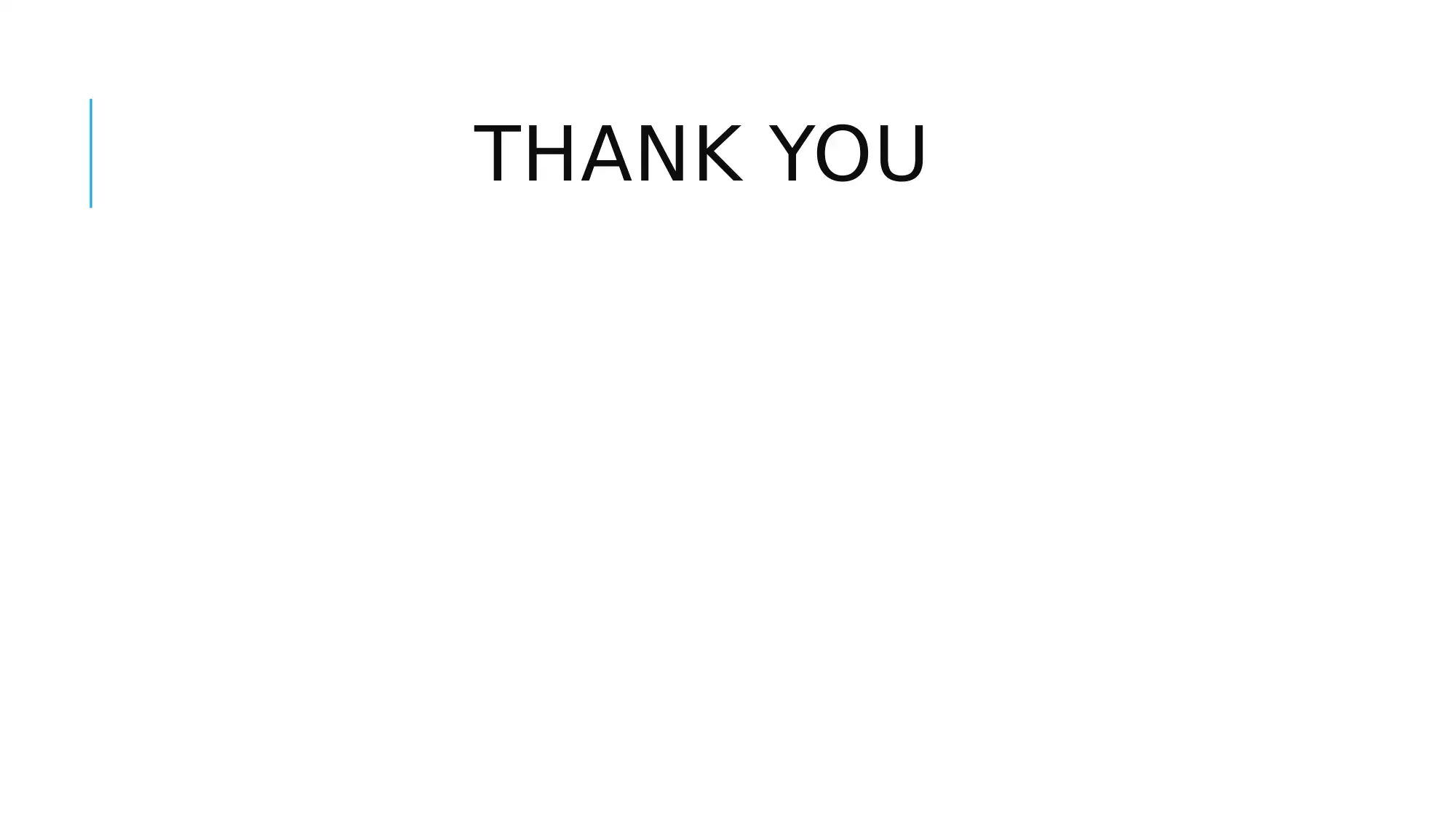
THANK YOU
⊘ This is a preview!⊘
Do you want full access?
Subscribe today to unlock all pages.

Trusted by 1+ million students worldwide
1 out of 12
Related Documents
Your All-in-One AI-Powered Toolkit for Academic Success.
+13062052269
info@desklib.com
Available 24*7 on WhatsApp / Email
![[object Object]](/_next/static/media/star-bottom.7253800d.svg)
Unlock your academic potential
Copyright © 2020–2025 A2Z Services. All Rights Reserved. Developed and managed by ZUCOL.





